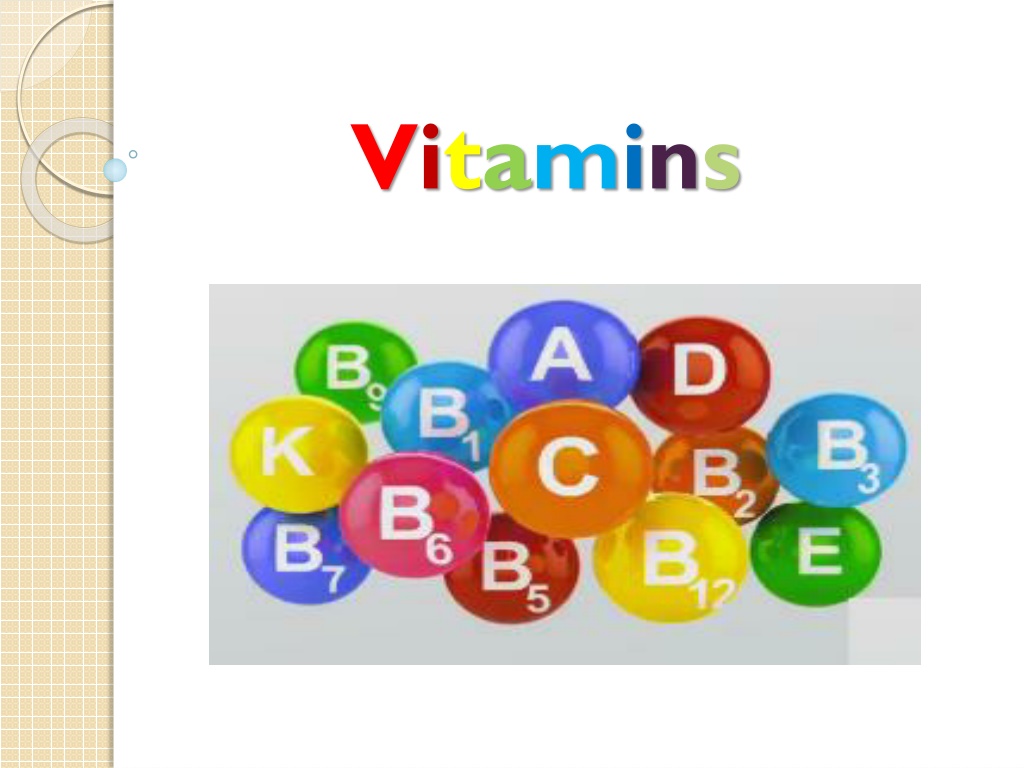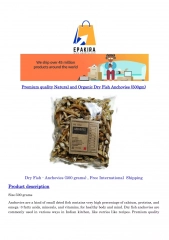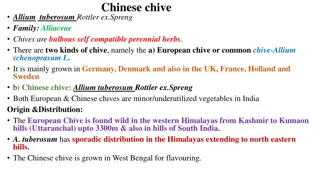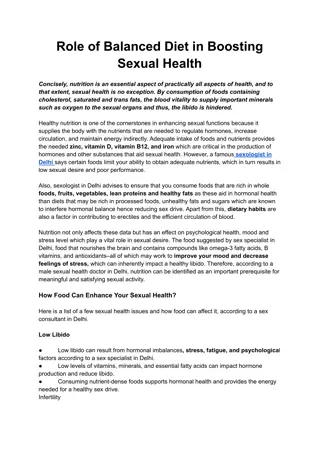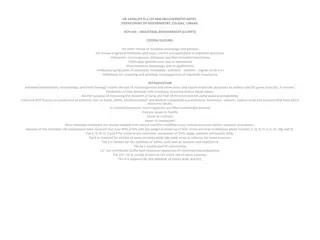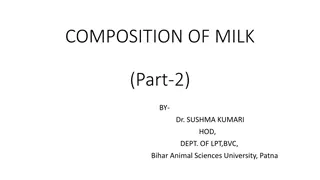Vitamins
Vitamins play vital roles in the body, with each type serving specific functions. Explore the importance of vitamins such as Thiamine (B1) and Riboflavin (B2), their food sources, functions, clinical effects of deficiencies, and laboratory diagnosis methods. Learn how these essential nutrients support overall health and wellbeing.
Uploaded on Feb 20, 2025 | 0 Views
Download Presentation

Please find below an Image/Link to download the presentation.
The content on the website is provided AS IS for your information and personal use only. It may not be sold, licensed, or shared on other websites without obtaining consent from the author. Download presentation by click this link. If you encounter any issues during the download, it is possible that the publisher has removed the file from their server.
E N D
Presentation Transcript
Vitamin B thiamine (B1), riboflavin (B2), nicotinamide (niacin), pyridoxine (B6), folate (pteroylglutamate), the vitamin B12 complex (cobalamins), biotin and pantothenate,
Thiamine (B1) Humans cannot synthesize thiamine. It is found in many dietary components; food grains,rice ,
Function ofThiamine B1 is a component of thiamine pyrophosphate, which is an essential cofactor for Decarboxylation of 2-oxoacids; pyruvate acetyl coenzymeA. In thiamine deficiency, pyruvate cannot be metabolized and accumulates in the blood. Transketolase in the pentose phosphate pathway.
Clinical effects of thiamine deficiency Adequate amounts are present in a normal diet and deficiency is most common 1. Beriberi weakness . Wet beriberi: Here cardiovascular prominent ,death occurs due to heart failure. Dry beriberi: In this condition, CNS manifestations are the major features. Infantile beriberi:It occurs in infants born to mothers suffering from thiamine deficiency. Restlessness and sleeplessness are observed. Cerebral beriberi : Clinical encephalopathy plus psychosis. It is seen only when the nutritional status is severely affected. manifestations are features are those of 2.Polyneuritis: It is common in chronic alcoholics.
Laboratory diagnosis of thiamine deficiency the estimation of erythrocyte transketolase activity .( Reduced activity) Other tests may be useful, including the measurement of both blood and urinary thiamine concentrations, a raised blood pyruvate concentration is suggestive as is a lactic acidosis
Riboflavin (B2) Sources and germinating plants such as peas and beans, and in smaller amounts in fish,poultry and meat. Riboflavin is found in large amounts in yeasts Functions flavine mononucleotide (FMN) flavine adenine dinucleotide (FAD). it is incorporated in the form of Both FMN and FAD are reversible electron carriers in biological oxidation systems,which are, in turn,oxidized by cytochromes
Riboflavin Deficiency (riboflavinosis) deficiency of riboflavin because riboflavin is synthesized by the intestinal flora. is uncommon, Riboflavin deficiency usually accompanies other deficiency diseases such as beriberi, pellagra and Kwashiorkor.
diagnosis of riboflavin deficiency Laboratory 1- The finding of a low erythrocyte activity of glutathione reductase (Riboflavin acts as a cofactor for this enzyme, which increases by about 30 per cent after the addition of FAD,suggests riboflavin deficiency. A low urinary riboflavin concentration may also be a useful marker of deficiency. The treatment for deficiency is to give riboflavin. Riboflavin excess is very rare.
Nicotinamide (niacin) Nicotinamide is the active constituent of Nicotinamide adenine dinucleotide (NAD+) and its phosphate (NADP+), which reduction reactions such as glycolysis and oxidative phosphorylation,and for many synthetic processes. are important cofactors in oxidation Not : Reduced NAD+ and NADP+ are, in turn, re-oxidized by flavoproteins, and the functions of riboflavin and nicotinamide are closely linked.
Sources Nicotinamide can be formed in the body from 1- nicotinic acid. 2-Some nicotinic synthesized in humans from tryptophan. acid can also be
Clinical effects of nicotinamide deficiency Pellagra
Pellagra is an Italian word,meaning rough skin . Pellagra is caused by the deficiency of Tryptophan as well as Niacin. Pellagra is seen more in women; this may be because tryptophan metabolism is inhibited by estrogen metabolites. The symptoms of pellagra are Dermatitis, Diarrhea,Dementia
Causes of nicotinamide deficiency Dietary deficiency of nicotinamide Deficient synthesis: Isoniazid (INH): It is an antituberculous drug, which inhibits pyridoxal phosphate formation. Hence, there is block in conversion of tryptophan to NAD+. Hartnup disease: Tryptophan absorption from intestine is defective in this congenital disease. Moreover,tryptophan is excreted in urine in large quantities. Carcinoid syndrome: The tumor utilizes major portion of available tryptophan for synthesis of
Laboratory diagnosis of nicotinamide deficiency measuring urinary N-methylnicotinamide concentration,which is low in deficiency.
Pyridoxine (B6) Structure Vitamin B6 consists of a mixture of three different closely related pyridine derivatives namely: 1.Pyridoxine 2.Pyridoxal 3.Pyridoxamine. All the three have equal vitamin activity, as they can be interconverted in the body.
Active Form of Vitamin B6 Pyridoxal phosphate (PLP) is the active form of vitamin B6 . PLP is formed from phosphorylation of all three forms of vitamin B6.
Functions (PLP) acts as coenzyme in large number of reactions of amino acid metabolism. For example: Transamination Decarboxylation Nonoxidative deamination Trans-sulfuration Condensation reactions of amino acids
Deficiency As pyridoxine occurs in most foods, the dietary deficiency of vitamin B6 is rare. Deficiency Manifestations Neurological Dermatological Hematological Doses over 100 mg may lead to sensory Not neuropathy Further excess is manifested by imbalance, numbness, muscle weakness and nerve damage.
Folic Acid Active Form of FolicAcid Tetrahydrofolate (THF) is the active form of folic acid. Folate is enzymatically reduced in a two- stage process in tissues to yield the dihydro and then tetrahydrofolate, which requires vitamin C
function of folic acid (THF) THF acts as a carrier of one carbon units. The one carbon units are
Deficiency Manifestations of Pyridoxine Neurological Manifestations; Dermatological Manifestations and Hematological Manifestations
Deficiency Manifestations Folate particularly I pregnant women and in alcoholics. Clinical symptoms of folic acid deficiency include: deficiency frequently occurs
Megaloblastic or macrocytic anemia impairement maturation of erythrocytes. Consequently of synthesis of DNA and impairs the Accumulation and excretion of FIGLU in the urine: Folate deficiency blocks the last step of histidine catabolism, due to lack of THF. This results in accumulation of FIGLU in body,which leads to increased excretion of FIGLU in urine
Hyperhomocysteinemia: Due to folic acid deficiency the methylation of homocysteine to methionine is impaired which leads to hyperhomocysteinemia. Increased level of homocystein is a risk factor for cardiovascular disease. Neural tube defect in fetus: Since, folate is required for the formation of neural tube in early stage of gestation, the folate deficiency during early stage of pregnancy increases the risk of neural tube defect
Biotin Biot was known formerly as vitamin H. Biotin is an imidazole derivative It consists of a tetrahydrothiophene ring bound to an imidazole ring and a valeric acid side chain Active Form of Biotin Enzyme-bound biotin, biocytin is an active form of biotin. Biotin is covalently bound to -amino group of lysine of an enzyme to form biocytin. Functions Biotin is a coenzyme of carboxylase reactions, where it is a carrier of CO2.
Deficiency Manifestation Since biotin is widely distributed in plant and animal foods and intestinal bacterial flora supply adequate amounts of biotin, the natural deficiency of biotin is not well characterized in humans. But the using of antibiotics, that inhibit the growth of intestinal bacteria, eliminates this source of biotin and leads to deficiency of biotin.
PantothenicAcid (Vitamin B5) The name pantothenic acid is derived from the Greek word pantothene, meaning from everywhere and gives an indication of the wide distribution of the vitamin in foods
Structure of Pantothenic acid Pantothenic combination of pantoic acid and - alanine . acid is formed by a Active form Active forms of pantothenic acid are: Coenzyme-A (CoA-SH) Acyl carrier protein (ACP).
Functions Pantothenic acid The thiol (-SH) group of CoA-SH and ACP acts as a carrier of acyl groups. Coenzyme-A participates in reactions concerned with: Reactions of citric acid cycle Fatty acid synthesis and oxidation Synthesis of cholesterol Utilization of ketone bodies. ACP participate in reactions concerned with - fatty acid synthesis.
Deficiency Manifestations No clearcut case of pantothenic acid deficiency has been reported. (becuase distributed in foods) except in malnourished prisoners of war the substance is widely
Thus, cobalamin exists in three forms that differ in the nature of the chemical group attached to cobalt. Cynocobalamin is the commercial available form of vitamin B12. Methylcobalamin Deoxyadenosylcobalamin
